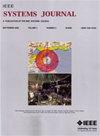NB-IoT系统级仿真框架:关键特性和性能评估
IF 4.4
3区 计算机科学
Q1 COMPUTER SCIENCE, INFORMATION SYSTEMS
引用次数: 0
摘要
窄带物联网(NB-IoT)是第三代合作伙伴计划(3GPP)为满足大规模机器类型通信(mMTC)的爆炸性需求而专门指定的技术,目前正在向RedCap演进。由于NB-IoT的轻量化设计和3GPP发布的全面技术规范,工业企业越来越多地采用NB-IoT作为mMTC的解决方案。本文提出了一个用于NB-IoT网络的系统级仿真框架,以评估其性能。系统级模拟器分为四个部分:初始化、预生成、主仿真循环和后处理。此外,还研究了三个基本特性,以增强覆盖范围、支持大规模连接并确保低功耗。仿真结果表明,信噪比的累积分布函数曲线完全符合工业标准。此外,吞吐量性能解释了NB-IoT网络如何以数据速率为代价实现大规模连接。这项工作突出了其实用性,并为NB-IoT网络的发展铺平了道路。本文章由计算机程序翻译,如有差异,请以英文原文为准。
System-Level Simulation Framework for NB-IoT: Key Features and Performance Evaluation
Narrowband Internet of Things (NB-IoT) is a technology specifically designated by the 3 rd Generation Partnership Project (3GPP) to meet the explosive demand for massive machine-type communications (mMTC), and it is evolving to RedCap. Industrial companies have increasingly adopted NB-IoT as the solution for mMTC due to its lightweight design and comprehensive technical specifications released by 3GPP. This article presents a system-level simulation framework for NB-IoT networks to evaluate their performance. The system-level simulator is structured into four parts: Initialization, pregeneration, main simulation loop, and postprocessing. In addition, three essential features are investigated to enhance coverage, support massive connections, and ensure low power consumption. Simulation results demonstrate that the cumulative distribution function curves of the signal-to-interference-and-noise ratio fully comply with industrial standards. Furthermore, the throughput performance explains how NB-IoT networks realize massive connections at the cost of data rate. This work highlights its practical utility and paves the way for developing NB-IoT networks.
求助全文
通过发布文献求助,成功后即可免费获取论文全文。
去求助
来源期刊

IEEE Systems Journal
工程技术-电信学
CiteScore
9.80
自引率
6.80%
发文量
572
审稿时长
4.9 months
期刊介绍:
This publication provides a systems-level, focused forum for application-oriented manuscripts that address complex systems and system-of-systems of national and global significance. It intends to encourage and facilitate cooperation and interaction among IEEE Societies with systems-level and systems engineering interest, and to attract non-IEEE contributors and readers from around the globe. Our IEEE Systems Council job is to address issues in new ways that are not solvable in the domains of the existing IEEE or other societies or global organizations. These problems do not fit within traditional hierarchical boundaries. For example, disaster response such as that triggered by Hurricane Katrina, tsunamis, or current volcanic eruptions is not solvable by pure engineering solutions. We need to think about changing and enlarging the paradigm to include systems issues.
 求助内容:
求助内容: 应助结果提醒方式:
应助结果提醒方式:


